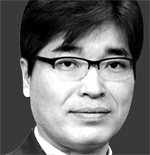Cut necessary and effective

Lee Jun-hyup
Domestic demand is in a serious state. Fledgling signs of recovery during the latter part of last year plateaued early in 2014 and lost ground after the sinking of the Sewol ferry in April. Non-manufacturing output that grew 0.9 percent in the final three months of 2013, gained 0.5 percent in the first quarter this year and contracted 0.1 percent in the second. Mining and manufacturing showed a similar pattern - gains of 0.9 percent and 0.5 percent, respectively, in the final quarter of 2013 and first quarter this year, followed by a loss of 0.9 percent in the second quarter. Retail sales fell 0.4 percent and the construction sector contracted by 0.8 percent in the same period. The retreat continued into July. Consumer and corporate sentiment worsened. The poor data caused the government to use all possible weapons to revive domestic demand. It was only natural for the central bank’s Monetary Policy Committee to keep in step with the stimulus operation. The synchronized actions had an immediate effect, with business and consumer sentiment widely expected to turn around from August.
Conditions are ripe for reaping the benefits from the rate cut. The synergy effect could be augmented with expansionary fiscal spending. Interest rates should be lowered to encourage consumers and businesses to spend. At the same time, a rate alone will not spur corporate investment; the government must increase policy funding and tax incentives.
Such concerted moves have worked in the past. Fiscal and monetary easing took place at the same time to prop up an economy hit by the global financial crisis in 2008-09 and 2012-13. It explains why the Korean economy managed to fare better than others during the period. The inflation rate also hovers at its lowest level since 2002. With consumer prices stable, a policy rate cut more effectively sends market rates downward, incentivizing companies to use cheap liquidity to invest. The financial market is operating well without liquidity woes. Additionally, there are no inflationary pressures on the supply end, such as in raw materials, or the dollar gain against the won.
Concerns linger primarily due to household debt. Many worry that lower interest rates together with easing loan-to-value and debt-to-income mortgage regulations could accelerate the growth of dangerously high household debt. Excessive borrowing could also discourage spending. This might be solved if the government acts quickly to make household income increase faster than debt, and some measures have been announced. But it must do more to help low-income working-class people through tax benefits and by raising minimum wages. It should increase training and retraining programs for the unemployed and social welfare programs for those unable to work.
Both the government and central bank in principle have done what they could to reinvigorate domestic demand, Their work is far from over. The two-pronged measure is expected to boost the growth rate by 0.2 percentage point, but that is not enough to compensate for the losses since the Sewol ferry disaster. Moreover, external factors show worrisome signs. International organizations are downgrading expectations for this year’s global economy. The ramifications for emerging economies of the tapering of quantitative easing by the U.S. Federal Reserve, deflationary signs in Europe and conflicts in Ukraine and the Middle East all bode badly for global economic prospects. If external factors deteriorate, domestic demand will likely remain depressed regardless of the rate reduction.
When worst comes to worst, the government and central bank must consider preemptive action through a supplementary budget and an additional cut.
Translation by the Korea JoongAng Daily staff.
*The author is the head of the economic trend analysis department of the Hyundai Economic Research Institute.
BY Lee Jun-hyup










with the Korea JoongAng Daily
To write comments, please log in to one of the accounts.
Standards Board Policy (0/250자)